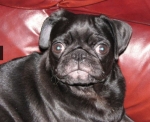CaptainRaven40 wrote:Pugsy wrote:It won't respond for a single lone apnea event like that during the middle of the event...it waits till the end of the event like it did in this situation..see the increase in pressure at the end of the event at around 7:33:00?
I am pretty sure that this is the way the algorithm works when dealing with single lone apnea events.
Now if there happens to be a cluster of events happen I think the machine gets more agressive.
From what I understand Pugsy has once again hit the information right.
It depends on the manufacturer and the algorithms they use in their auto machines.
Here's one from a Respironics machine.
Den
.
<P>NR = Non-Responsive Apnea/Hypopnea event</P>
Above 8 cmH2O pressure, the pressure increase for sustained apneas/hypopneas is limited to 3 cmH2O above the pressure setting at the onset of the apnea/hypopnea sequence.
The pressure setting at the onset of the sequence is called the "Onset Pressure."
The pressure 3 cmH2O above the "Onset Pressure" is called the "NRAH Threshold."
"NRAH" is an acronym for "Non-Responsive Apnea/Hypopnea.
An apnea/hypopnea x2 event detected after reaching the NRAH Threshold is considered to be non-responsive.
A special case of Non-Responsive A/H is when the events are hypopneas only, with no apneas.
After seeing two Hypopneas, the algorithm increases the pressure by 1 cmH2O, and the Onset Pressure resets to this new pressure level.
However, the Onset Pressure can not be raised above 12 cmH2O by a sustained string of Hypopnea-only events.
This does not imply that the Onset Pressure value can not be set above 12 cmH2O. It only states that the Onset Pressure can not be <b>RESET</b> above 12 cmH2O due to a string of Hypopnea-only events.
The maximum NRAH Threshold due to a sustained string of Hypopnea-only events will be 3 cmH2O above 12 cmH2O.
When the device encounters a non-responsive apnea or hypopnea, it will decrease pressure by 2 cmH2O and hold the pressure for 15 minutes.
During this 15-minute "NRAH-hold" period, the pressure will be changed only in response to detection of a sequence of vibratory snore events.
The reason for this increase in pressure followed by a decrease in pressure when an apnea/hypopnea is not responsive is to allow the device to respond appropriately to an event that is not treatable by increases in pressure, such as a central apnea.
.
(5) REMstar Autos w/C-Flex & (6) REMstar Pro 2 CPAPs w/C-Flex - Pressure Setting = 14 cm.
"Passover" Humidification - ResMed Ultra Mirage FF - Encore Pro w/Card Reader & MyEncore software - Chiroflow pillow
User since 05/14/05










